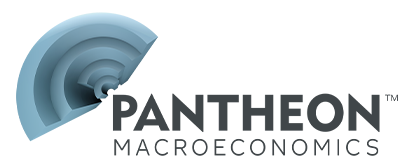- EZ inflation data are in line with further gradualism from the ECB this month, implying a 25bp cut.
- We still see little chance of either EZ headline or core inflation making a perfect landing at 2%.
- Outright deflation is a remote risk in Switzerland; the SNB will make a final 25bp rate cut in March.
Claus Vistesen (Chief Eurozone Economist)Eurozone
In one line: Hot; EZ inflation to overshoot the consensus tomorrow.
Claus Vistesen (Chief Eurozone Economist)Eurozone
- German inflation overshoots expectations; we now see EZ HICP inflation at 2.6% in December.
- A rebound in services pulled the EZ PMIs higher in December, amid still-depressed manufacturing.
- Seasonals, investor sentiment and firming real M1 growth promise a further rise in the EZ PMI in Q1.
Claus Vistesen (Chief Eurozone Economist)Eurozone
In one line: Relief in the PMIs; investor sentiment and seasonals signal further gains ahead.
Claus Vistesen (Chief Eurozone Economist)Eurozone
In one line: Better than markets expected, but surveys warn of accelerating weakness in Q1.
Claus Vistesen (Chief Eurozone Economist)Eurozone
- German unemployment held steady in December, but surveys warn of further increases in Q1.
- We think EZ HICP inflation rose by 0.3pp in December, to 2.5%, 0.1pp above the consensus.
- The upturn in German retail sales is intact, but manufacturing is still stuck in the mud.
Claus Vistesen (Chief Eurozone Economist)Eurozone
In one line: Sustained weakness in manufacturing; upturn in real M1 growth is accelerating.
Claus Vistesen (Chief Eurozone Economist)Eurozone
- Uncertainty over EZ fiscal policy at the start of 2025, but the outlook for monetary policy is clearer.
- Data released over the holidays confirm stellar Q3 GDP growth, and slightly higher inflation, in Spain.
- Early 2025 data to signal still-difficult conditions in industry, but a continued upturn in M1 growth.
Claus Vistesen (Chief Eurozone Economist)Eurozone
In one line: Sinking; exports to the US likely stung by port strikes.
Claus Vistesen (Chief Eurozone Economist)Eurozone
- Relief in the PMIs today? We hope so, but the overall message from the survey will remain negative.
- Germany’s exports slumped in October, likely due in part to port strikes in the US.
- EZ manufacturing should remain on the back foot in Q4, while France gets a new Prime Minister.
Claus Vistesen (Chief Eurozone Economist)Eurozone
- The ECB eases by 25bp, with the SNB delivering a 50bp cut; bang in line with our expectations.
- Yesterday marks the start of a new regime for the ECB, but where is that neutral rate again?
- We think the SNB will ease again in March, by 25bp, which will be the final cut in this cycle.
Claus Vistesen (Chief Eurozone Economist)Eurozone
In one line: Dovish, but staying open on the path in 2025 and the level of the neutral rate.
Claus Vistesen (Chief Eurozone Economist)Eurozone
In one line: As expected; no longer need for a restrictive policy rate. Where is neutral?
Claus Vistesen (Chief Eurozone Economist)Eurozone
- This year our EZ GDP growth forecasts were decent; we were close to the final outcome 50% of the time.
- Our forecasts on inflation were on the money, mostly, notwithstanding a wobble at the start of the year.
- Our ECB calls have been correct at each meeting, and our SNB forecasts were right 75% of the time.
Claus Vistesen (Chief Eurozone Economist)Eurozone
- Two-year yields will stay pinned close to 2% at the start of the year, before rising gradually…
- …But we expect the 2s10s Bund curve to start bearsteepening early next year.
- We think the early 2000s represent a good playbook for the ECB’s next moves on interest rates.
Claus Vistesen (Chief Eurozone Economist)Eurozone
In one line: That’s more like it, but Q3 details flatter to deceive.
Claus Vistesen (Chief Eurozone Economist)Eurozone
In one line: Improving, but net trade in services will be a drag on growth in Q4.
Claus Vistesen (Chief Eurozone Economist)Eurozone
In one line: Stung by a plunge in energy production; core manufacturing fell slightly.
Claus Vistesen (Chief Eurozone Economist)Eurozone
- In France, Mr. Macron must go back to the drawing board as his government is ousted.
- German orders and French industrial production show industry was still on the back foot in October…
- ...Clouds continue to form on the horizon, even if some boost will come from pre-tariff US orders.
Claus Vistesen (Chief Eurozone Economist)Eurozone
